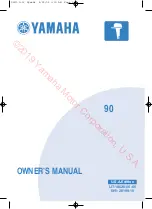
3
2
1
0
3
2
1
0
Associated
Common Pins
Register
7
0
Associated
Segment Pins
Sn+1
Sn
--
--
--
--
--
--
LCDM15
29, 28
--
--
28
--
--
--
--
--
--
LCDM14
27, 26
--
--
26
--
--
--
--
--
--
LCDM13
25, 24
--
--
24
--
--
--
--
--
--
LCDM12
23, 22
--
--
22
--
--
--
--
--
--
LCDM11
21, 20
--
--
20
--
--
--
--
--
--
LCDM10
19, 18
--
--
18
--
--
--
--
--
--
LCDM9
17, 16
--
--
16
--
--
--
--
--
--
LCDM8
15, 14
--
--
14
--
--
--
--
--
--
--
--
LCDM7
13, 12
12
n
3, 2
2
--
--
--
--
--
--
--
--
LCDM2
5, 4
4
--
--
--
--
--
--
--
--
LCDM3
7, 6
6
--
--
--
--
--
--
--
--
LCDM4
9, 8
8
--
--
--
--
--
--
--
--
LCDM5
--
--
--
--
--
--
1, 10
--
--
10
LCDM6
--
--
--
--
--
--
LCDM16
--
--
31, 30
30
--
--
--
--
--
--
LCDM17
--
--
33, 32
32
--
--
--
--
--
--
LCDM18
--
--
35, 34
34
--
--
--
--
--
--
LCDM19
--
--
37, 36
36
--
--
--
--
--
--
LCDM20
--
--
39, 38
38
1, 0
0
--
--
--
--
--
--
--
--
LCDM1
LCD_C Operation
934
SLAU367P – October 2012 – Revised April 2020
Copyright © 2012–2020, Texas Instruments Incorporated
LCD_C Controller
36.2 LCD_C Operation
The LCD controller is configured with user software. The setup and operation of the LCD controller is
discussed in the following sections.
36.2.1 LCD Memory
The LCD memory organization differs slightly depending on the mode.
Each memory bit corresponds to one LCD segment or is not used, depending on the mode. To turn on an
LCD segment, its corresponding memory bit is set.
The memory can also be accessed word-wise using the even addresses starting at LCDM1, LCDM3, ...
Setting the bit LCDCLRM clears all LCD memory registers at the next frame boundary. It is reset
automatically after the registers are cleared.
36.2.1.1 Static and 2-Mux to 4-Mux Mode
For static and 2-mux to 4-mux modes, one byte of the LCD memory contains the information for two
segment lines.
shows an example LCD memory map for these modes with 160 segments.
Figure 36-2. LCD Memory for Static and 2-Mux to 4-Mux Mode - Example for 160 Segments















































